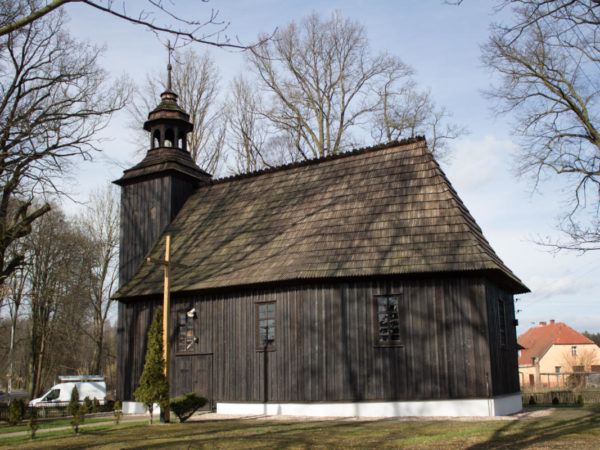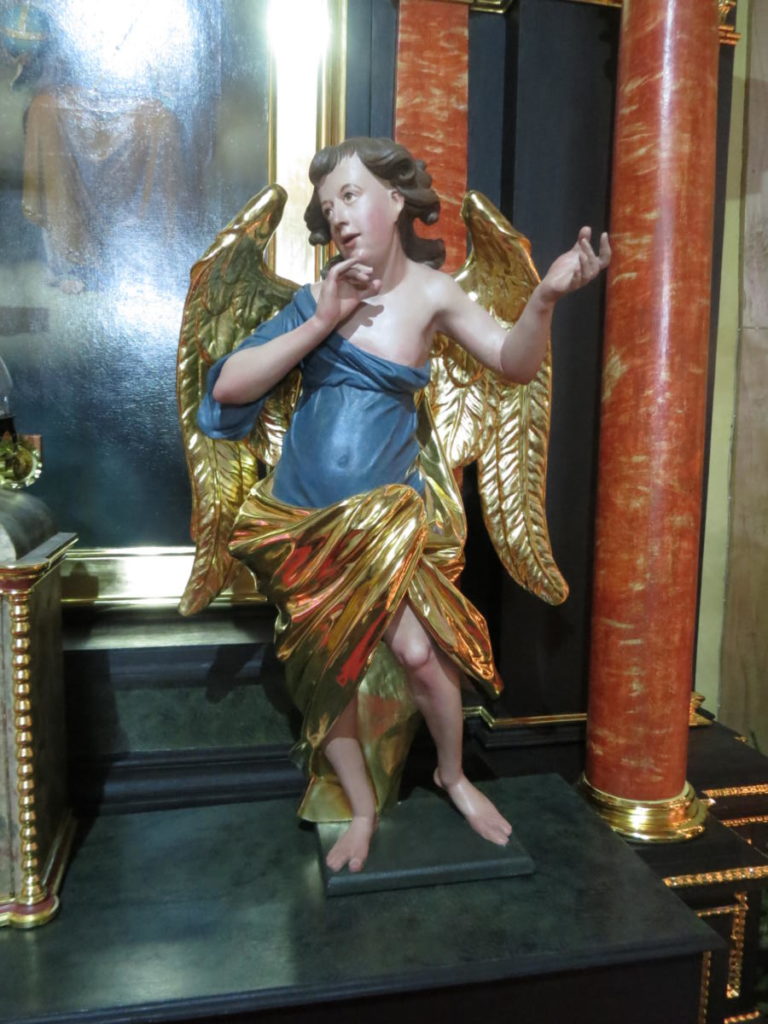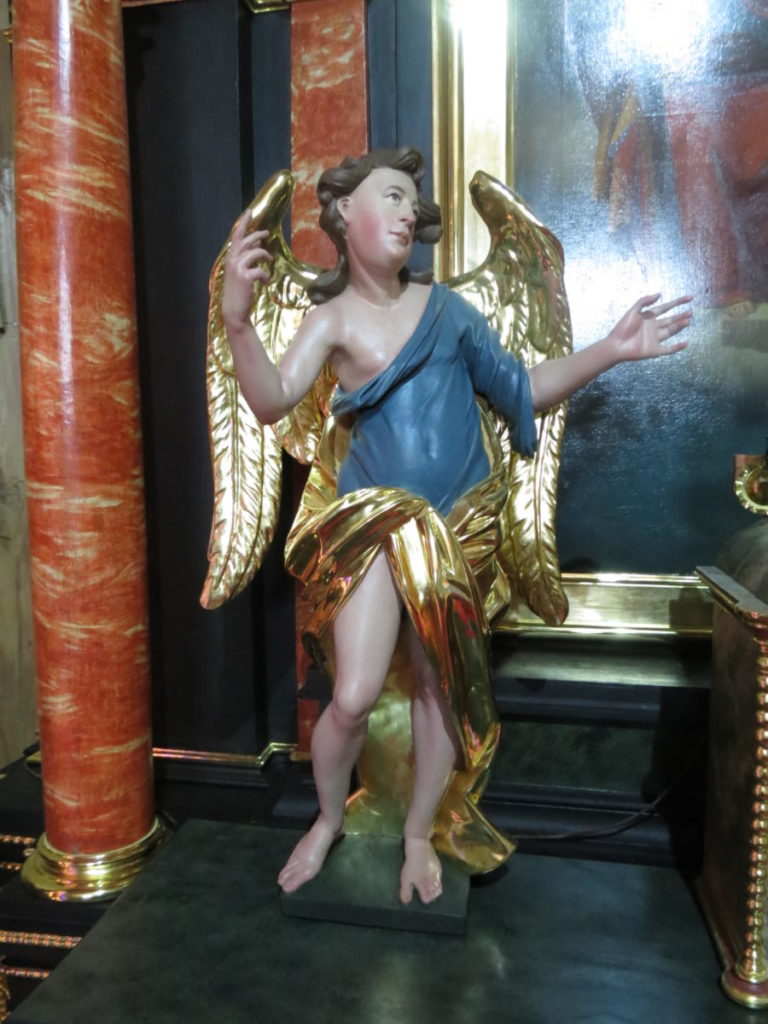
Church of Holy Trinity in Dziesławice
RENOVATION OF THE MAIN ALTAR IN THE FILIAL CHURCH OF THE HOLY TRINITY IN DZIESŁAWICE
The main altar of the filial church of the Holy Trinity in Dziesławice was built from parts which come from different historical periods. It consists of baroque elements from the middle of the 18th century and the turn of the 19th and 20th centuries.

The overall condition of the object was bad, mainly due to plastic deformations which it had undergone during previous repairs, and also due to physical, chemical and biological processes. Signs of woodboring beetle were identified, and wood of woodcarved elements was almost completely degraded.


Very thick layer of monochromatic oil repaintings in orange-brown colours with a touch of bright green as well as silver and gold paint badly affected the aesthetics of the altar. The texture of painted surfaces was rough, waterstained and glossy. Many signs of mechanical damage, cracks and gaping planks could be noticed. Sculptures were also repainted.


The main reason for renovation was an active process of successive deterioration of the object. The primary aim was prevention of the ongoing damage of the altar caused by xylophages and physical-chemical processes, as well as ablation of repaintings which distorted the aesthetic reception of the altar.
Multiple point stratigraphic tests were conducted which established in details the character, condition and the scope of original painting layers and gilding. Before renovation, photographic and descriptive documentation of the object’s condition was made. Visual analysis showed local loosening of the layer of paint, old and imprecisely processed putties, low artistic level of unoriginal repainting including originally gilded elements. Next, the surface of the altar was cleaned from dust and surface dirt. Then the initial sterilization of the object was performed with the use of an insecticide applied by jet grouting and swabbing. On the basis of the conducted test, the repainting of the altar’s architecture surface was removed with the help of warm air. It turned out that the left pilaster of the right side of the altar was unoriginal. The overpaint on the surface of the gilding was ablated with the use of solvent paste washable with white spirit. Sterilization with an insecticide was was repeated, the procedure was conducted twice with a two-week break. Parts of wood which were damaged strongly were impregnated with an acrylic resin solution. Damaged construction joints were fixed, unoriginal slats and plugs were removed. Castings of slats’ decorations were made and mounted in places where they had not been preserved. Cracked elements of wood-carved appliques from panels, caps and columns’ bases were glued. Consolidation of the paint layer was made with a leather oil. Cracks and large losses of wood were filled with with an epoxy resin. Wood surface and some losses of the painting layer were made with an acrylic putty.




Losses of the layer of paint were stippled with the use of a “small line” method with acrylic paints. The reconstruction of the ploychromy was made on the surface of the unoriginal pilaster in the panel of the predella, and in the bottom parts of the pedestals. The polychromed surfaces were protected with a varnish. Gildings were made with bole in a colour close to original and 23 ¾ karat gold leaf with gloss and matt finish. Matt gilding in easily accessible places which are susceptible to damage and silvering were protected with shellac.
The figures of angels were cleaned, old putties and retouch were ablated. Works which involved removal of repainting started with test to clean the surface with sets of solvents. Oil and emulsion repainting was removed as well as part of old chalk-adhesive putties, and plaster putty saturated with resin and wax. Small losses of wood were filled with epoxy product, missing elements were reconstructed. Emulsion, so called Viennese, putty was applied where losses had occurred and stippled with acrylic paints. Everything was varnished, and the gilding was reconstructed due to a poor condition of the original.
In the end, the altar was assembled in the church, the painting was placed and all mobile elements were mounted. The final photographic, descriptive and conservation documentation was made.





